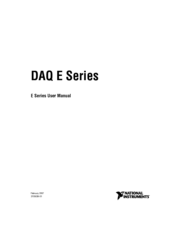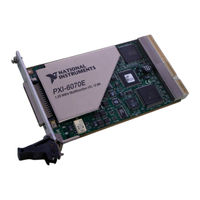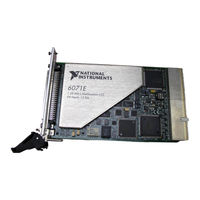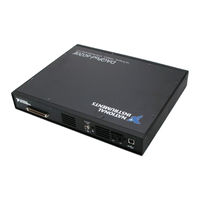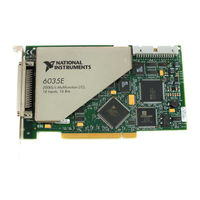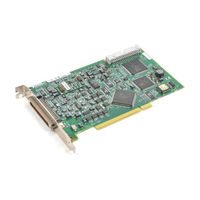
National Instruments DAQ PCI E Series Manuals
Manuals and User Guides for National Instruments DAQ PCI E Series. We have 7 National Instruments DAQ PCI E Series manuals available for free PDF download: User Manual
National Instruments DAQ PCI E Series User Manual (265 pages)
Brand: National Instruments
|
Category: Computer Hardware
|
Size: 3 MB
Table of Contents
Advertisement
National Instruments DAQ PCI E Series User Manual (264 pages)
National Instruments Data Acquisition Device User's Manual
Brand: National Instruments
|
Category: I/O Systems
|
Size: 5 MB
Table of Contents
National Instruments DAQ PCI E Series User Manual (265 pages)
Brand: National Instruments
|
Category: I/O Systems
|
Size: 3 MB
Table of Contents
Advertisement
National Instruments DAQ PCI E Series User Manual (265 pages)
Brand: National Instruments
|
Category: I/O Systems
|
Size: 3 MB
Table of Contents
National Instruments DAQ PCI E Series User Manual (265 pages)
Brand: National Instruments
|
Category: Computer Hardware
|
Size: 3 MB
Table of Contents
National Instruments DAQ PCI E Series User Manual (265 pages)
Brand: National Instruments
|
Category: I/O Systems
|
Size: 3 MB
Table of Contents
National Instruments DAQ PCI E Series User Manual (161 pages)
PCI E Series Multifunction I/O Boards for PCI Bus Computers
Brand: National Instruments
|
Category: Computer Hardware
|
Size: 1 MB
Table of Contents
Advertisement
Related Products
- National Instruments DAQCard-6715
- National Instruments DAQPad-6020E
- National Instruments DAQ X NI 632 Series
- National Instruments DAQ X NI 634 Series
- National Instruments DAQ X NI 635 Series
- National Instruments DAQ X NI 636 Series
- National Instruments DAQ X NI 637 Series
- National Instruments DAQ X NI 638 Series
- National Instruments DAQ X NI 639 Series
- National Instruments DAQ SC-205X Series

